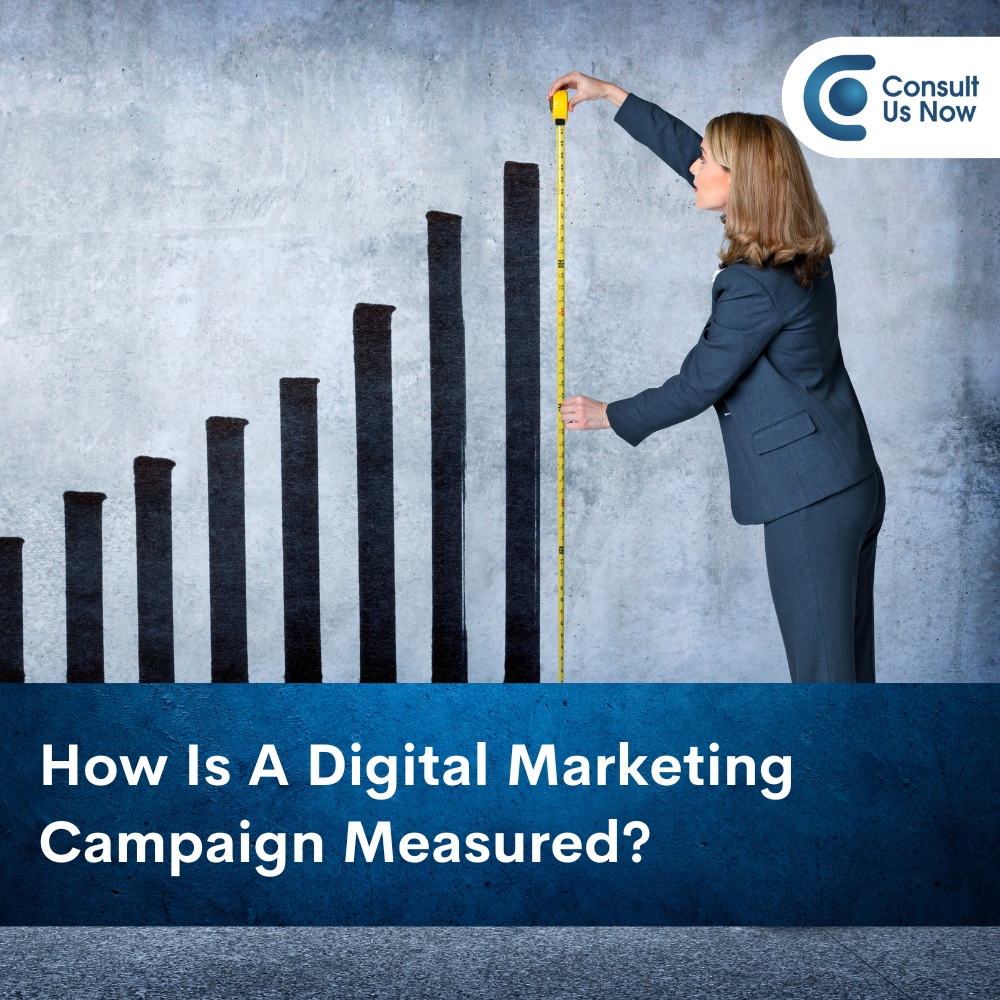Introduction
Do you know that 72% of businesses haven’t reviewed their advertising campaigns for about a month? Most companies fail to monitor the performance of their digital marketing campaigns because they don’t know how to measure it. If you don’t continuously measure and manage your spending, your budget will quickly dissolve.
With websites becoming more important in the consumer journey, measuring the effectiveness of digital marketing becomes increasingly important. In order to measure digital marketing effectiveness, it is necessary to determine the overall impact of campaigns on the company.
In this blog, we’ll discuss how to evaluate the effectiveness of digital marketing by outlining six key metrics.
Continue reading to find out more!
Measuring the Performance of Your Digital Marketing Campaigns
You should start measuring your campaigns at the very beginning of the planning process. Let’s examine how to evaluate a digital marketing effort in a manner that is connected to your campaign objectives.
Here are 6 ways to determine a digital marketing campaign’s level of success:
Set SMART Objectives
Setting and completing objectives is a crucial component of any excellent digital marketing strategy, but many people find it difficult to do so. This is due to the fact that they don’t have specific goals. In order to accurately evaluate the success of your campaign, set SMART objectives.
SMART is an acronym that stands for:
Specific: Your objectives should be clear in terms of what you hope to accomplish.
Measurable: It should be possible to determine whether your goal was accomplished.
Achievable: You must be able to achieve your objectives.
Realistic: Your objectives must be achievable and related to your company.
Timely: Your aim should have a defined timeline.
SMART goals are ideal for digital marketing since they push you to set specific goals that can be measured to see if you achieved your objectives. When you set a general objective, such as “Earn more leads,” it can be difficult to determine whether you are accomplishing a goal that is so general by looking at your digital marketing analytics. On the other hand, when you set SMART goals, you can determine if your display advertising metrics are meeting your objectives.
Discover Your Target Audience
- Who is the target audience for this campaign?
- Why should they be concerned?
- Which platform do they frequently watch? (Facebook, LinkedIn, YouTube, Instagram, etc.)
- What features do they share? (For instance, gender, age, income, values, hobbies, etc.)
- How familiar is your brand currently with your target market?
- What influences their decisions to purchase or convert?
Select Key Metrics That Represent Your Objectives
- Click-Through Rate (CTR): CTR estimates the proportion of users who click on your advertisement or content, demonstrating its significance and ability to create interest among the people you want to reach.
- Conversion Rate: This indicator measures the proportion of visitors to your website who complete the preferred action, such as completing a purchase or signing up, showing how well your campaign worked in producing visible results.
- Return on Investment (ROI): ROI measures the profitability of your digital marketing campaigns by comparing the income produced to the overall marketing expenses.
- Cost Per Click (CPC): CPC is a measure of the average cost for every click on your advertisement. It helps with budget planning and affordability evaluations for your marketing efforts.
- Customer Acquisition Cost (CAC): CAC determines the cost of gaining new customers, taking into account marketing and sales expenses, and offers insights into the financial viability of your customer acquisition methods.
- Bounce Rate: The percentage of viewers to your website who quit without interacting further is known as a bounce rate, and it represents the impact of the landing pages and contents.
- Email Open Rate: This indicator measures the proportion of receivers who open your emails, allowing you to assess how well your subject lines and email content succeeded in attracting readers.
- Social Media Engagement: It refers to the number of likes, shares, comments, and other interactions a post receives on social media, which reflects how interested an audience is in the content and how well it resonates with them.
- Organic Search Traffic:This metric evaluates how many people visit your website from Google and other search engines without using paid advertising. Thus it reflects how well your website is performing in terms of SEO.
- Ad Impressions: It keeps track of the frequency with which your advertisements are shown, giving you information about the exposure and impact of your campaign.
- Cost Per Acquisition (CPA): CPA determines the typical cost of getting a customer, thereby demonstrating the effectiveness of your marketing campaigns in turning leads into potential customers.
- Customer Retention Rate: This indicator shows the proportion of consumers you successfully maintain, showing both the success of your retention efforts and the overall quality of your goods or services.
- Page Load Time: Page load time evaluates the speed at which your website pages load, influencing the user experience and search engine ranking.
- Content Engagement: This comprises indicators like the amount of time spent on the website, scrolling depth, and interactions with multimedia features, and it shows how effectively your content draws in and holds the interest of users.
- Lead Generation Metrics:This includes indicators like the quality and quantity of leads generated, and level of engagement of leads, providing insights into the success of your lead generation methods.
Track the Metrics
Analyze and Report Your Outcomes
The process of reporting your results may take some time. However, it’s crucial to comprehend the performance of your online marketing. When it comes to putting the results into reports, centralizing your analytics and marketing data gives you a competitive benefit. You will be able to rapidly transform that data into comprehensive, educational reports when all of your results are in one location.
You may learn more about what works and what doesn’t during your campaign by analyzing the results. You can use this information to adjust your campaigns effectively in the future for improved outcomes.





